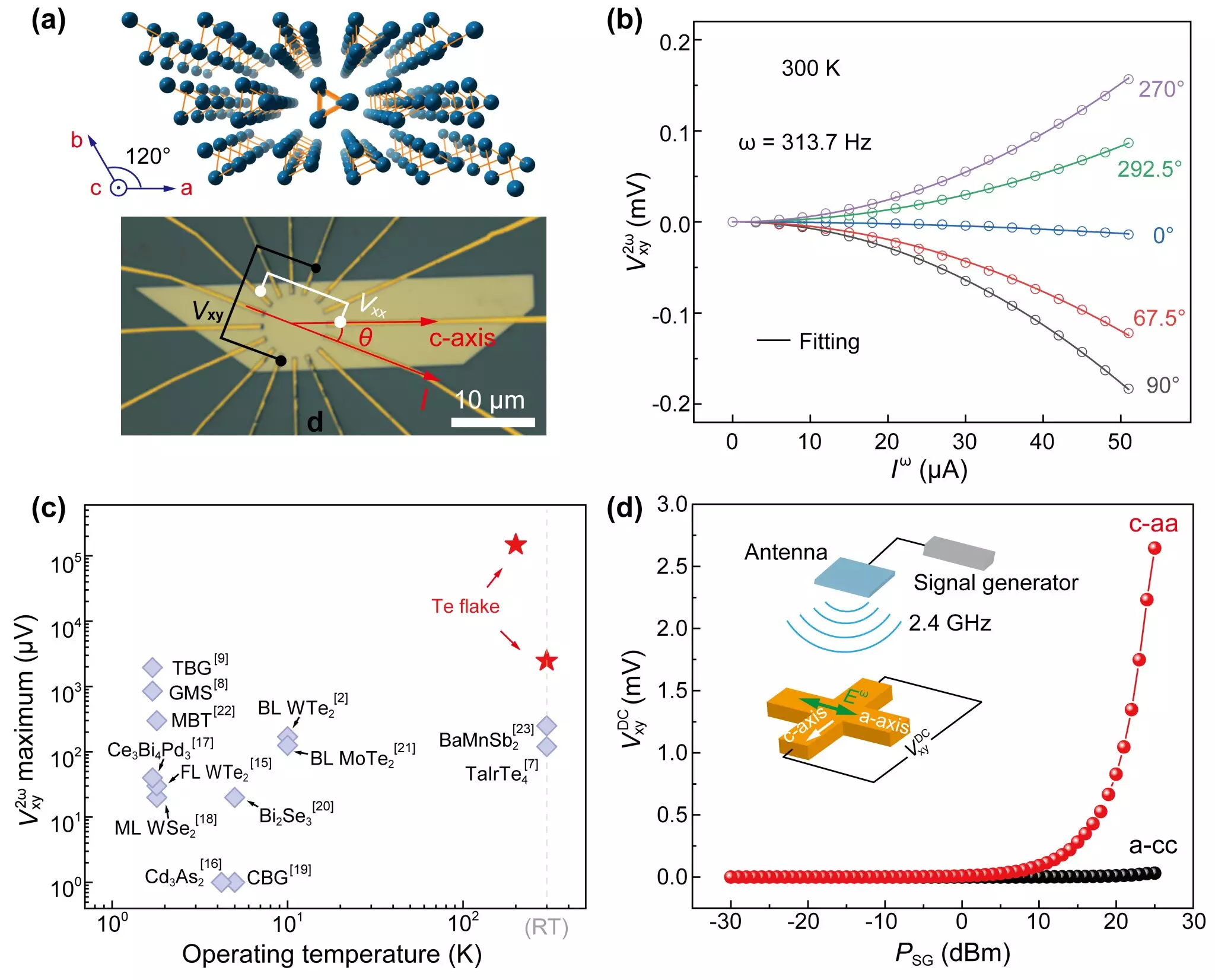Recent advancements in semiconductor technology have opened new avenues for energy-efficient electronic devices. A noteworthy development has emerged from a research team investigating the nonlinear Hall effect (NLHE) in tellurium (Te), a remarkable elemental semiconductor. Published in the journal Nature Communications, this research underscores the significance of NLHE, particularly its capability to produce second-harmonic electrical signals in the absence of an external magnetic field.
Historically, NLHE research has encountered serious hurdles that impeded its practical application. Previous studies reported minimal Hall voltage outputs and required low operating temperatures, making them impractical for everyday use. Notably, while NLHE has been documented at room temperature, it was previously confined to materials such as Dirac semimetal BaMnSb2 and Weyl semimetal TaIrTe4. Unfortunately, these materials exhibited limited voltage outputs and lacked the necessary tunability integral for widespread application.
This research team, led by Prof. Zeng Changgan and Associate Researcher Li Lin from the University of Science and Technology of China (USTC), set out to explore new materials that could successfully exhibit NLHE at room temperatures. Their focus on tellurium stemmed from its unique structural properties, which include one-dimensional helical chains that naturally break inversion symmetry. This structural characteristic not only positions tellurium as an ideal candidate for NLHE evaluation but also promises substantial advancements over its predecessors.
In their investigational studies, the researchers observed significant NLHE in thin flakes of Te at room temperature, with a maximum second-harmonic output recorded at an impressive 2.8 mV at 300 K. This output is noteworthy, as it marks a substantial increase compared to prior findings. The team’s experiments and theoretical analyses determined that the NLHE observed in the tellurium thin flakes primarily results from extrinsic scattering phenomena, where the unique surface symmetry breaking of the flakes plays a pivotal role.
One of the most remarkable aspects of this research is its foray into wireless radio frequency (RF) rectification using tellurium. By substituting the traditional alternating current with RF signals, the team achieved stable rectified voltage outputs across a wide frequency range of 0.3 to 4.5 GHz. This innovation marks a significant shift from conventional rectifiers that depend on p-n junctions or metal-semiconductor constructions, as the NLHE-based Hall rectifier benefits from its intrinsic characteristics, allowing for a broad response under zero bias.
The implications of this research stretch far beyond the laboratory, envisioning applications in energy harvesting and wireless charging technologies. By elucidating the mechanisms behind the NLHE in tellurium, this study not only enhances our comprehension of nonlinear transport phenomena in solids but also paves the way for the development of next-generation electronic devices. As the field of semiconductor research progresses, the findings from the USTC team are set to become a cornerstone for innovative, sustainable technologies. The advancements in NLHE within tellurium illustrate the potential to revolutionize electronic components and systems, molding a future where electronic devices are more efficient and versatile than ever before.

